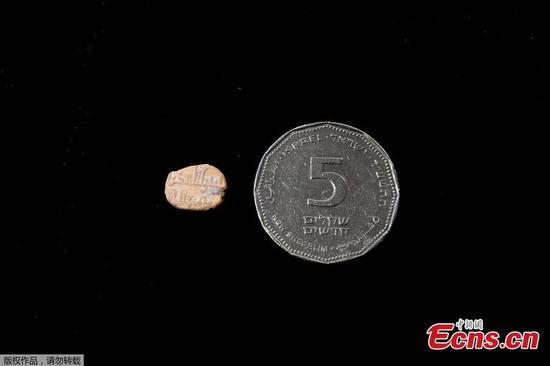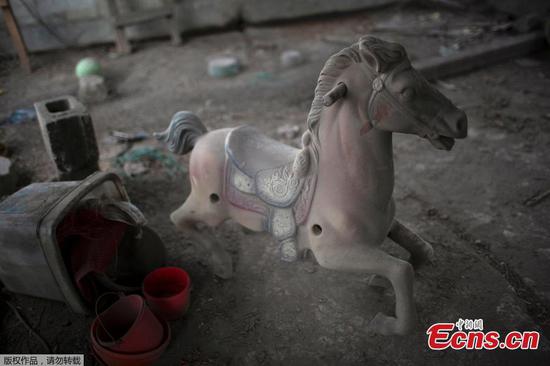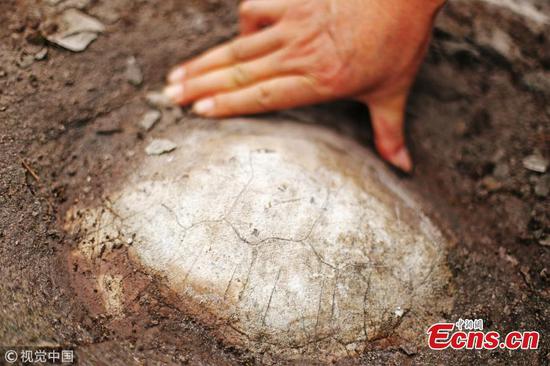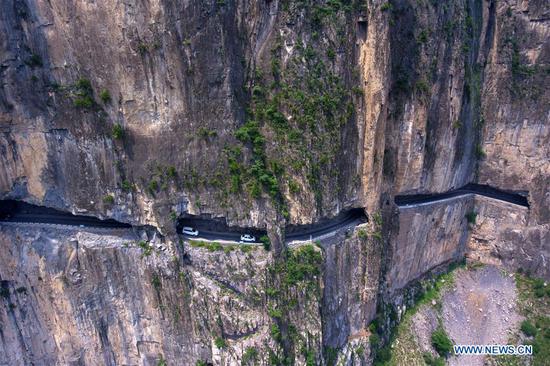About 300 footprints discovered in hilly Shandong village
Over 300 dinosaur footprints from seven species, including the same species of the dinosaur named "Blue" in the film, Jurassic World: Fallen Kingdom, were found in a village in East China's Shandong Province.
The dinosaur tracks, which include around 70 footprints of dromaeosaurid, a two-legged feathered dinosaur, confirms for the first time that the species lived in groups, Xing Lida, a dinosaur footprints expert at Beijing-based China University of Geosciences, told the Global Times on Monday.
"The diversity in the site is also remarkable. Footprints of birds and seven dinosaur species, including animal- and plant-eating ones, were spotted together," said Xing, who first investigated the site in April last year.
"Normally only one or three dinosaur species could be found at a site," he added.
The site, which sits in a mountainous area in Shandong's Tancheng county, is in well-preserved, though the site has no protection at all, Tang Yonggang, a well-known "dinosaur hunter" and a visiting professor at Linyi University in Shandong, told the Global Times after visiting the site on Monday.
The four trackways, each footprint about 8 centimeters long, suggest the dinosaurs traveled together, a typical sign that they lived in groups, Xing said.
Feathered dinosaurs or dromaeosaurids range in length from 0.7 meters to over 6 meters. They first appeared in the mid-Jurassic Period (167 million years ago) and survived until the end of the Cretaceous (65.5 million years ago) period, according to online database Encyclopedia of Life.
"Although the film's depictions of dinosaurs - that they are highly intelligent and capable of showing empathy - are imaginary, the species are indeed agile and smart. They could be at the top of the food chain if they acted in groups," Xing said.
Footprint clues
Footprints and fossilized bones are the two major sources of dinosaur study, scientists said.
"Footprints can tell the dinosaur's movements, such as whether it is running or walking and at what speed. They can suggest geographical conditions, such as whether a place is wet or dry, in mountainous areas or along waterways, and help the study of the species' evolution and migration by comparing them to footprints found elsewhere," Xing added.
"They can also reveal the dinosaurs' social activities, such as whether they were swimming, from the shape, shade and arrangement of the footprints," Tang said.
Scientists said that although China has found dinosaur footprints in over 100 places, many are not well-preserved due to lack of funding or natural conditions.
Dinosaur footprints are normally protected on site and require ventilation and drainage, Xing said. Another preferred manner is to build a digital model of the footprints, which means the footprints could be printed using 3D printers even after being damaged, Xing told the Global Times on Monday.
Tang said since a dinosaur's footprint could be as large as 80 centimeters in diameter and the footprints could stretch miles, it is quite challenging to preserve the tracks because of weather conditions and landslides.
Businessmen also target the footprints and fossils.
A nine meter-long skeleton of an unidentified type of dinosaur was sold at an auction in Paris for more than $2.3 million on June 4, Reuters reported. For dinosaur tracks, the online price for one piece ranges from around $50 to over $1,000. China has pioneered in the study of dinosaurs, including samples and scientific research, but it also needs to better preserve fossils and footprints, especially in rural areas, Tang said.
Experts from China and Greece started joint preservation work on more than 170 dinosaur footprints discovered in a Beijing suburb, the Xinhua News Agency reported in May. The footprints were believed to have been left by dinosaurs that lived 140 to 150 million years ago in the late Jurassic Period.




















































